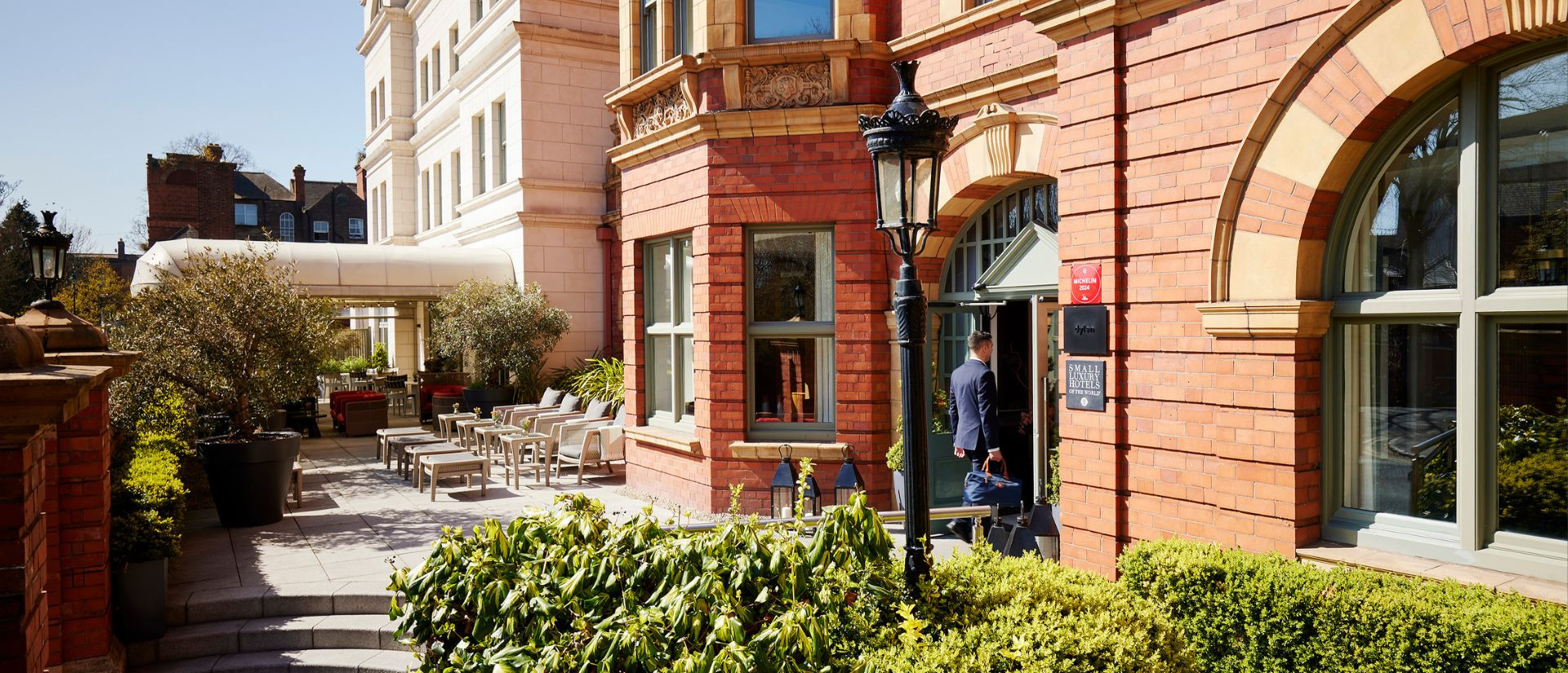Located in one of Dublin’s most prestigious neighbourhoods, Dylan Hotel sits at the heart of a district once home to some of Ireland’s most celebrated literary figures. In this edition, we turn our attention to one of the greats, Patrick Kavanagh, whose life and work were deeply rooted in the streets surrounding Baggot Street.
Patrick Kavanagh
Born on 21 October 1904, just four years after the foundation stones of Dylan Hotel were laid, Patrick Kavanagh grew up in Mucker, Inniskeen, Co. Monaghan. He was the son of a small farmer and cobbler and attended Kednaminsha National School before working on the family farm, experiences that would later shape his poetic voice.
Patrick Kavanagh, one of Ireland’s most celebrated poets, spent his later years walking the streets of Dublin 4, particularly Baggot Street, just moments from Dylan Hotel. It was here, in the heart of the city’s Georgian quarter, that Kavanagh found both hardship and inspiration.
His groundbreaking poem The Great Hunger (1942) captured the emotional isolation of rural Ireland and earned praise from literary figures like Frank O’Connor and George Yeats. Though controversial, it cemented his place in Irish literary history. In the years that followed, Kavanagh published Tarry Flynn (1948), a semi-autobiographical novel that was briefly banned for its realism, and launched Kavanagh’s Weekly, a short-lived but bold literary journal.
Despite personal and professional challenges, including a libel trial and serious illness, Kavanagh experienced a creative revival in the 1950s. Works like Come Dance with Kitty Stobling and Recent Poems revealed a softer, more reflective voice. He later settled on Waterloo Road, just off Baggot Street, where he lived until his death in 1967 which was tragically the same year of his wedding with his love Katherine Barry Moloney.
On Raglan Road – 1940’s
“On Raglan Road” is one of Patrick Kavanagh’s most enduring works. It is a poignant reflection on unrequited love, inspired by his relationship with Hilda Moriarty. Set against the backdrop of Dublin’s Baggot Street, the poem captures the quiet ache of longing and the wisdom gained through heartbreak.
In 2019, “On Raglan Road” received recognition as one of Ireland’s favourite folk songs, its legacy cemented by Luke Kelly’s rendition who was a member the renowned Dubliners.
On Raglan Road on an autumn day I met her first and knew That her dark hair would weave a snare that I might one day rue; I saw the danger, yet I walked along the enchanted way, And I said, let grief be a fallen leaf at the dawning of the day.
On Grafton Street in November we tripped lightly along the ledge Of the deep ravine where can be seen the worth of passion's pledge, The Queen of Hearts still making tarts and I not making hay - O I loved too much and by such and such is happiness thrown away.
I gave her gifts of the mind I gave her the secret sign that's known To the artists who have known the true gods of sound and stone And word and tint. I did not stint for I gave her poems to say. With her own name there and her own dark hair like clouds over fields of May
On a quiet street where old ghosts meet I see her walking now Away from me so hurriedly my reason must allow That I had wooed not as I should a creature made of clay - When the angel woos the clay he'd lose his wings at the dawn of day.
Patrick Kavanagh in Our Neighbourhood
Today, his legacy lives on in the poetry that continues to echo through Dublin’s streets and in the quiet corners of Baggot Street.
Patrick Kavanagh now sits peacefully on the Royal Canal along our self-guided walking tour route marking his heritage and presence in Irish poetry history.
Why not take a leisurely stroll along the canal and sit beside Patrick Kavanagh and take in the beauty of our neighbourhood.
The Dylan Hotel Team

